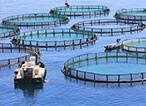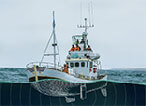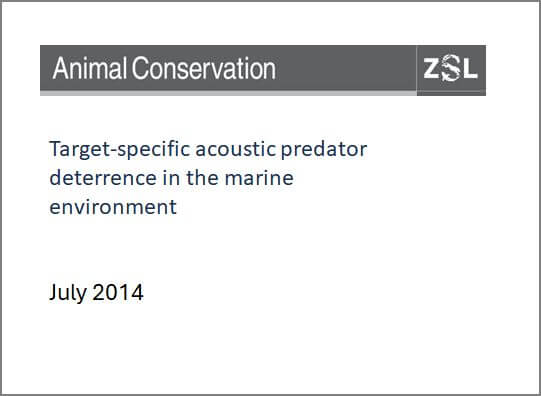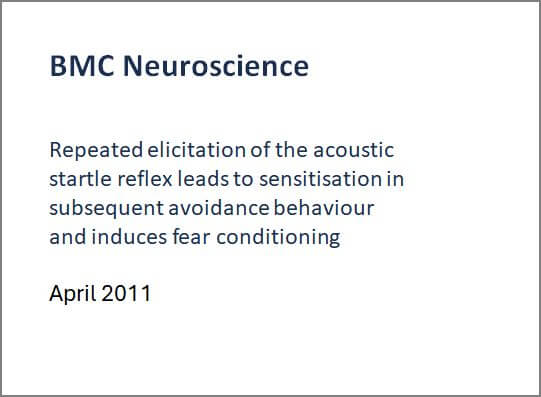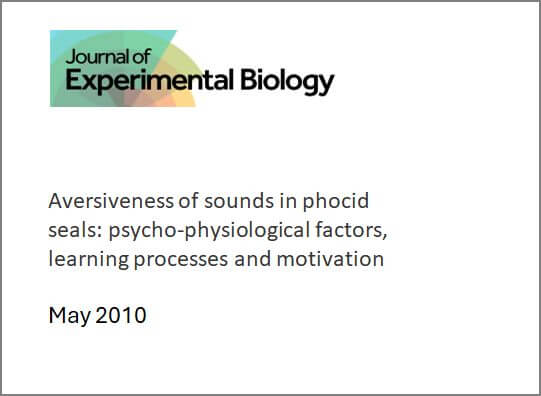Non-lethal management of carnivore depredation: startle reflex
Abstract
Carnivore depredation on human livestock is a worldwide problem with few viable solutions. Non-lethal management tools such as acoustic devices show highly varying success and often pose a conservation risk due to noise pollution and habitat degradation. We tested the long-term effectiveness of a deterrence system which harnesses an autonomous reflex (startle) to selectively inflict avoidance responses in a target species (phocid seals) by emitting band-limited noise pulses with sharp onset times. Seal predation was monitored at a marine salmon farm (test site) over a full production cycle (19 month) with a multi-transducer deterrent system deployed for the final year. Predation was also monitored for several months at two control sites and additional short-term tests were carried out at sites which suffered higher predation rates. Generalized linear (mixed) models revealed that sound exposure caused a 91% reduction in lost fish when comparing predation levels within the test site and 97% when comparing the test site against both control sites. Similarly, sound exposure led to a 93% reduction in the number of fish lost due to seal damage at a short-term test site. Visual monitoring of marine mammals around the long-term test site showed that the number of seal surfacings within 100 m from the loudspeakers was only slightly lower during sound exposure. Harbour porpoise and otter distribution around the farm was not affected by sound exposure. By adjusting the frequency composition of startle stimuli, our method has the potential to provide solutions for managing human–wildlife conflicts in terrestrial and marine habitats by selectively deterring target species.
 Go Back
Go Back

